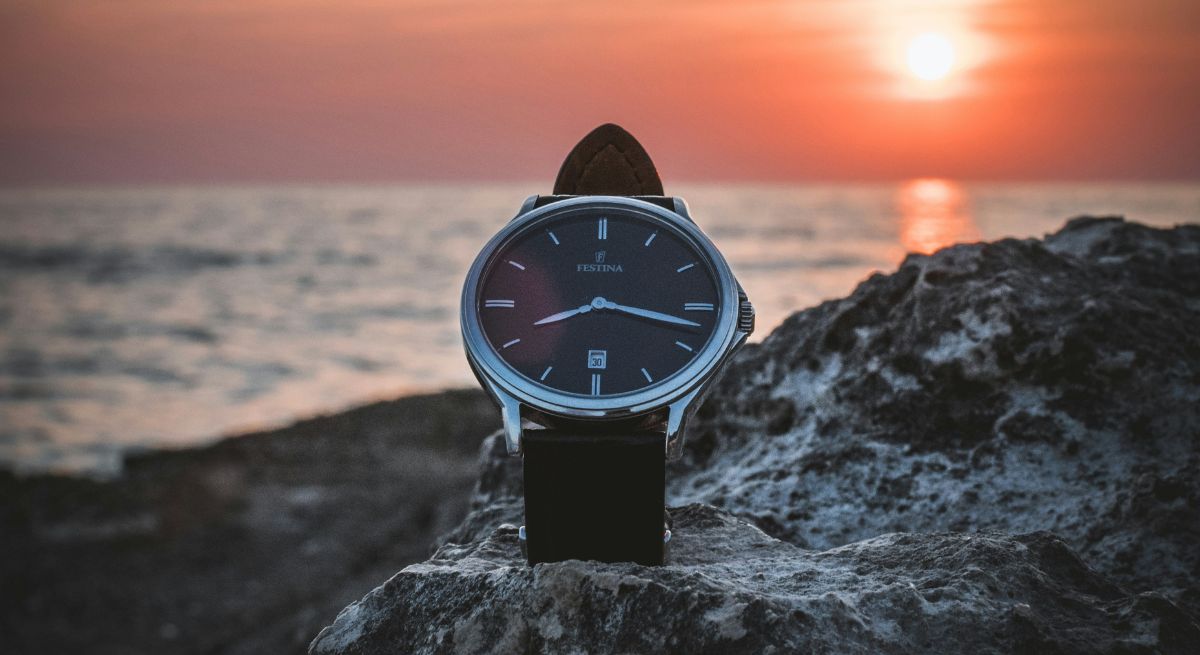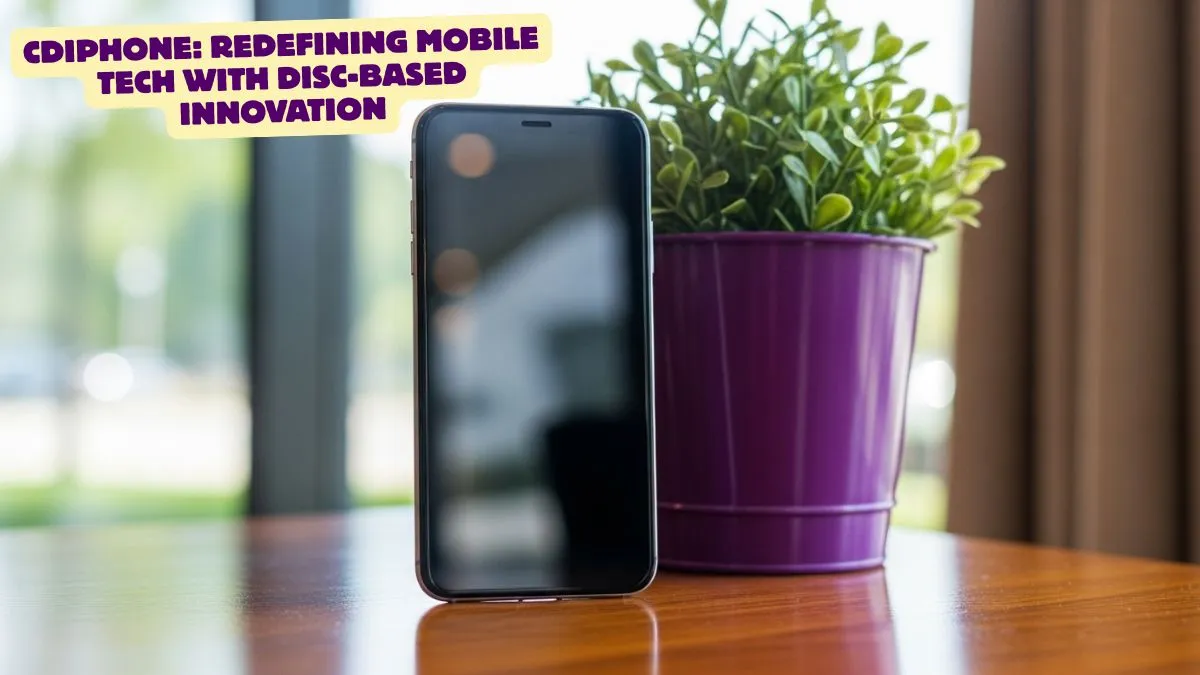Gadget
Vostok Amphibia: The Legendary Russian Dive Watch

The Vostok Amphibia is a unique and iconic dive watch that has captivated watch enthusiasts worldwide. Known for its distinctive design, robust durability, and affordability, the Vostok Amphibia holds a special place in the history of horology. This article delves into the origins, design, functionality, and enduring appeal of the Vostok Amphibia.
The History of Vostok Amphibia
The Vostok Amphibia was first developed in the Soviet Union during the late 1960s. During the height of the Cold War, the Soviet military required a reliable and affordable dive watch that could withstand extreme underwater conditions. Engineers Mikhail Novikov and Vera Belov were tasked with creating this specialized timepiece.
Launched in 1967, the Vostok Amphibia was a groundbreaking achievement. It combined innovative engineering with cost-effective manufacturing processes. Despite limited resources, the design team successfully created a dive watch capable of withstanding depths of up to 200 meters. The watch’s ability to perform in harsh environments made it a preferred choice for Soviet navy divers and other military personnel.
Innovative Design and Engineering
The Vostok Amphibia stands out due to its unconventional design choices. Unlike most dive watches, which rely on rigid construction to ensure water resistance, the Amphibia uses a unique system where water pressure strengthens the watch’s seals.
One of the most innovative features is the use of a domed acrylic crystal. As the watch descends into deeper waters, external pressure compresses the crystal, enhancing the seal against the case. Additionally, the case back employs a two-piece design, allowing it to flex and maintain water resistance under pressure. These features enable the Amphibia to withstand depths that rival more expensive Swiss dive watches.
Mechanical Movement and Reliability
At the heart of the Vostok Amphibia is a robust mechanical movement. Most models feature the Vostok 2416B automatic movement, known for its reliability and ease of maintenance. This 31-jewel movement offers approximately 31 hours of power reserve and operates at a frequency of 19,800 beats per hour.
A key advantage of the Vostok Amphibia is its simplicity and durability. The movement is designed to be repairable, making it a long-lasting timepiece. Furthermore, the watch does not rely on a battery, reducing the need for frequent maintenance. Despite its affordable price point, the Amphibia’s movement is shock-resistant and can endure challenging environments.
Iconic Aesthetics and Design Variations
The Vostok Amphibia is renowned for its distinctive and often playful designs. Over the years, Vostok has produced hundreds of dial variations, featuring bold colors, military insignias, and nautical themes. This diversity has made the Amphibia a favorite among collectors.
The watch’s aesthetic is defined by its utilitarian yet quirky charm. Models typically feature large, easily readable dials, luminous hands, and rotating bezels. The acrylic crystal adds a vintage touch, while the stainless steel case enhances durability. From minimalist designs to vibrant, eye-catching styles, the Vostok Amphibia offers a wide array of choices for different tastes.
Affordability Without Compromise
One of the most appealing aspects of the Vostok Amphibia is its affordability. While luxury dive watches from brands like Rolex and Omega can cost thousands of dollars, the Amphibia is available at a fraction of the price. Despite its low cost, the watch does not compromise on performance or durability.
This affordability makes the Amphibia an accessible entry point into the world of mechanical dive watches. It is especially popular among watch enthusiasts looking for a reliable timepiece without breaking the bank. The watch’s low cost also encourages customization, with many owners modifying their Amphibias to reflect personal style.
Cultural Legacy and Popularity
The Vostok Amphibia has achieved cult status in the watch community. Its appearance in popular media, such as the 1998 film The Life Aquatic with Steve Zissou, has further cemented its iconic reputation. Beyond its cinematic fame, the Amphibia’s history as a Soviet military tool watch adds to its mystique and appeal.
Collectors and watch enthusiasts appreciate the Amphibia’s blend of history, functionality, and affordability. Online forums and social media groups dedicated to Vostok watches foster a thriving community where fans share their modifications, experiences, and admiration for this enduring timepiece.
How to Care for Your Vostok Amphibia
Proper maintenance ensures the longevity of a Vostok Amphibia. While the watch is designed to be robust, regular care is essential. Here are some key maintenance tips:
- Avoid Extreme Conditions: Although the Amphibia is water-resistant, avoid exposing it to extreme heat or rapid temperature changes, which may affect the seals.
- Routine Cleaning: Wipe the watch with a soft cloth and mild soap to remove dirt and debris, especially after underwater use.
- Service Intervals: Like any mechanical watch, the Amphibia benefits from periodic servicing. Experts recommend servicing every 3-5 years to maintain its performance.
- Crown Handling: Ensure the crown is fully screwed down to preserve water resistance, especially before submersion.
By following these simple steps, you can keep your Vostok Amphibia running smoothly for years to come.
Why Choose a Vostok Amphibia?
The Vostok Amphibia offers a compelling combination of affordability, durability, and unique design. Here are some reasons why it remains a popular choice:
- Historical Significance: A watch with a rich Soviet-era heritage and military roots.
- Reliable Movement: Mechanical movement that is both durable and easy to maintain.
- Unique Design: Distinctive aesthetics and diverse dial options.
- Water Resistance: Capable of withstanding depths up to 200 meters.
- Affordable Price: Exceptional value compared to other dive watches.
Whether you are a seasoned collector or a newcomer to mechanical watches, the Vostok Amphibia is a timepiece that combines functionality, history, and charm.
Conclusion
The Vostok Amphibia stands as a testament to Soviet ingenuity and engineering excellence. Its unique design, robust performance, and accessible price point have made it a beloved watch among enthusiasts worldwide. Whether for diving, daily wear, or collecting, the Amphibia remains a remarkable piece of horological history. For those seeking an affordable yet reliable mechanical dive watch, the Vostok Amphibia is an enduring classic that continues to make waves.

Guides
Photeeq Lens Flare: Adding Cinematic Light to Your Photos

“Photeeq Lens Flare is a powerful editing plugin designed to add cinematic light effects to your photos. With its realistic presets, customizable options, and seamless blending, it’s perfect for photographers, designers, and content creators. By using Photeeq, you can enhance your visuals with emotional depth, creative lighting, and professional polish making every photo stand out.”
Photography is all about capturing light, and sometimes, adding a touch of creative light can transform an ordinary image into a cinematic masterpiece. That’s where Photeeq Lens Flare comes in. It’s a powerful photo editing plugin that helps you add realistic and artistic light effects to your pictures.
Whether you’re a beginner learning photo editing or a professional designer, Photeeq makes it simple to create stunning light flares that mimic natural sunlight or cinematic glows. It’s designed to enhance your images while maintaining a professional and polished look.
In this guide, we’ll explore what Photeeq Lens Flare is, how it works, its key features, and why it’s a must-have tool for photographers and editors.
What Is Photeeq Lens Flare?
Photeeq Lens Flare is a digital photo enhancement plugin created for photographers, editors, and designers who want to add artificial light simulation in a realistic way. It allows users to overlay lens flares the light streaks or glares you see when shooting into a bright source on photos to give them a cinematic effect.
The tool is built to replicate the look of natural light aesthetics and professional camera flares that you often see in movies, ads, and high-end photography. This gives your photos a more dramatic, vibrant, and storytelling feel.
Unlike basic filters, Photeeq offers advanced post-processing effects that blend seamlessly into your original image. The result looks natural, not artificial, making it ideal for both creative and commercial use.
Key Features of Photeeq Lens Flare
Photeeq is packed with features designed to make editing faster, easier, and more creative.
One of its strongest features is cinematic lighting presets. These are ready-made effects that let you instantly add light rays, glows, or glares with just one click. You can customize them by adjusting brightness, position, and opacity to match your image.
It also includes professional retouching tools that help refine your photo while maintaining quality. The real-time preview feature shows you exactly how the flare looks before applying it, so you can experiment without risk.
Photeeq is compatible with popular editing software like Adobe Photoshop and Lightroom, making it a flexible choice for different workflows.
Why Use Lens Flare Effects in Photography?
Lens flare effects are more than just decoration — they add emotion and depth to a photo.
When used correctly, flares can highlight the subject, guide the viewer’s eye, and create a warm or dreamy atmosphere. They’re often used in visual storytelling to evoke feelings of nostalgia, adventure, or serenity.
For photographers and digital artists, adding a lens flare helps simulate natural sunlight, enhancing outdoor shots or adding artistic touches to portraits and landscapes.
How Photeeq Enhances Your Workflow
Photeeq fits seamlessly into your photography workflow by simplifying complex lighting effects.
You don’t need to spend hours manually painting light streaks or adjusting layers. Instead, Photeeq’s intuitive interface lets you select a style and apply it instantly. You can fine-tune details to ensure it matches your photo’s composition and lighting.
This efficiency allows you to focus more on creative photo composition and storytelling rather than spending time on technical adjustments.
Step-by-Step: How to Use Photeeq Lens Flare
Using Photeeq is easy and beginner-friendly.
-
Open your photo in your preferred editing software (like Photoshop).
-
Launch the Photeeq plugin and browse through the flare presets.
-
Choose a lens flare that suits your image’s lighting direction and mood.
-
Adjust position and intensity to match your scene.
-
Preview the result and apply the effect once you’re satisfied.
Within minutes, your image gets a professional lighting boost that looks both artistic and realistic.
Benefits of Using Photeeq Lens Flare
There are many reasons why editors and photographers prefer Photeeq.
First, it saves time. Instead of manually creating light rays, you can use built-in presets for fast results. Second, it ensures quality every effect is carefully designed for natural light blending.
Lastly, it enhances the visual appeal of your photos. Whether you’re editing wedding shots, travel landscapes, or digital ads, Photeeq adds a layer of cinematic polish that grabs attention.
Creative Use Cases
Photeeq is versatile and can be used in various projects.
For wedding photographers, it adds soft sunlight flares that make moments feel magical. For travel bloggers, it enhances sunrise and sunset images. For graphic designers, it helps create stunning visual ads with glowing highlights.
Even social media creators can use it to make posts more visually appealing and professional-looking.
Tips for Best Results
To get the most out of Photeeq, use flares subtly. Overusing them can make your image look artificial.
Always match the flare direction with your light source, and choose colors that complement your image’s tone. For example, use warm amber flares for golden hour shots and cool blue ones for nighttime photos.
Experiment with editing presets and try different combinations to discover your own style.
Conclusion
Photeeq Lens Flare is a must-have tool for anyone looking to add depth, warmth, and cinematic flair to their images. It combines creativity with technology, giving photographers the power to simulate artificial light while maintaining realism.
Whether you’re editing professionally or just starting out, Photeeq makes your photos shine with professional quality and emotional impact.
By using Photeeq Lens Flare, you can turn simple pictures into storytelling masterpieces full of light, color, and character.
FAQs
What is Photeeq Lens Flare used for?
It’s used to add realistic lens flare and light effects to photos for cinematic and artistic results.
Is it suitable for beginners?
Yes, Photeeq offers user-friendly presets and controls perfect for beginners.
Can I use Photeeq with Photoshop?
Absolutely. Photeeq works with popular software like Photoshop and Lightroom.
Does it reduce image quality?
No, Photeeq’s effects blend naturally without reducing resolution or sharpness.
What kind of projects can I use it for?
You can use it in portraits, landscapes, wedding photography, digital ads, and creative projects.
Gadget
Gadgetfreeks.com: Your Source for Honest Tech Reviews

In today’s fast-paced tech world, staying updated with the latest gadgets and innovations is crucial for both tech enthusiasts and casual consumers alike. Whether you’re looking for a new smartphone, a smartwatch, or cutting-edge home gadgets, gadgetfreeks.com offers in-depth reviews, comparisons, and expert insights to help you navigate the ever-growing tech market. This article dives into why gadgetfreeks.com is the go-to site for all things gadgets, covering the latest tech trends, reviews, and why it’s trusted by tech lovers worldwide.
What Is Gadgetfreeks.com?
Gadgetfreeks.com is a comprehensive online platform dedicated to all things tech. The site provides its audience with expert reviews, detailed comparisons, and comprehensive buying guides to help consumers make informed decisions about the latest gadgets on the market. From smartphones to gaming consoles, wearables to home automation, gadgetfreeks.com ensures that readers stay ahead of the curve with accurate and up-to-date information.
What sets gadgetfreeks.com apart from other tech review sites is its ability to break down complex technical jargon into digestible, easy-to-understand content. Whether you’re a seasoned tech enthusiast or a casual shopper looking for your next gadget, gadgetfreeks.com offers something for everyone.
Why Gadgetfreeks.com Is a Go-To for Tech Enthusiasts
For tech enthusiasts, gadgetfreeks.com is more than just a website—it’s a hub of innovation and discovery. The platform delivers detailed, unbiased reviews on the latest gadgets, including smartphones, laptops, wearables, gaming gear, and home tech devices. What makes gadgetfreeks.com stand out is its commitment to offering well-rounded reviews that go beyond the product’s specifications, diving deep into real-world usage, performance, and value for money.
Tech enthusiasts flock to the site for its expert analysis and insightful commentary. Whether you’re searching for a gadget review or simply want to stay updated on the hottest tech trends, gadgetfreeks.com provides everything you need to keep your finger on the pulse of the tech world.
Latest Gadgets and Innovations Reviewed
One of the key strengths of gadgetfreeks.com is its ability to cover the latest gadgets across a wide range of categories. Let’s look at a few of the recent tech innovations that have made waves in the industry and how gadgetfreeks.com has covered them:
Apple iPhone 17 Series
The latest iPhone models have always been highly anticipated, and gadgetfreeks.com did not disappoint with its comprehensive review of the iPhone 17 series. From the upgraded A19 Bionic chip to the new camera enhancements, gadgetfreeks.com offers an in-depth analysis of how these changes impact everyday use. The review also includes comparisons with previous models and competing smartphones in the same price range, making it an essential read for anyone considering upgrading their device.
Samsung Galaxy Z Fold 7
As foldable phones continue to rise in popularity, the Samsung Galaxy Z Fold 7 has taken center stage. Gadgetfreeks.com’s review of this innovative device highlights its sleek design, improved durability, and enhanced multitasking capabilities. The site dives into the unique foldable display and whether this cutting-edge technology is truly practical for everyday users.
Oculus Quest 3
Virtual reality is quickly becoming a mainstream technology, and the Oculus Quest 3 is a standout in the VR world. Gadgetfreeks.com offers a detailed review of this standalone VR headset, exploring its impressive graphics, immersive gameplay, and the overall user experience. The review also compares it to earlier models, discussing the improvements in both hardware and software.
Apple Watch Ultra
For those looking to combine luxury with functionality, the Apple Watch Ultra is a standout choice. Gadgetfreeks.com covers its rugged design, advanced health tracking features, and high-end finish. For readers interested in fitness, adventure, or simply exploring the best wearable tech on the market, this review provides all the information you need to make an informed purchase.
These are just a few examples of the gadgets it covers. The site regularly updates its content with the latest tech innovations and provides detailed analysis to ensure readers have all the information they need to make the right choice.
How Gadgetfreeks.com Helps You Make Smart Gadget Purchases
In today’s gadget-filled world, making the right purchase decision can be overwhelming. With so many products to choose from, how do you know which one is the best fit for your needs? Gadgetfreeks.com offers a solution by providing in-depth reviews and buying guides that break down the pros and cons of each product.
The site’s expert reviews cover essential factors like performance, battery life, design, features, and value for money. Whether you’re a casual consumer looking for a budget-friendly option or a tech enthusiast in search of the latest high-end gadget, it ensures that you have all the information you need to make an informed decision.
Additionally, the buying guides on it make it easier for readers to navigate the overwhelming number of options available in each category. For instance, if you’re looking for the best budget smartphone of the year, you’ll find a curated list of top-rated phones within your price range, making it easier to decide based on your preferences and needs.
Why Tech Enthusiasts Trust Gadgetfreeks.com
Trust is essential in the tech world, and gadgetfreeks.com has built a solid reputation as a trustworthy source of gadget reviews and tech information. The site is committed to providing unbiased, honest reviews, and it avoids sponsored content that might influence the integrity of its evaluations. This transparency is one of the reasons why tech enthusiasts rely on it for accurate information.
Another reason for the site’s popularity is its engagement with the tech community. He encourages readers to leave feedback on product reviews and engage in discussions, creating a sense of community among fellow tech lovers. This interaction helps ensure that the content remains relevant and up-to-date, with real user experiences adding valuable insights to the reviews.
Conclusion
Whether you’re a tech enthusiast seeking in-depth gadget reviews or a casual consumer looking for expert buying advice, gadgetfreeks.com offers everything you need to make the right decisions in today’s tech world. From the latest gadgets to comprehensive tech reviews, the site continues to be a reliable source of information for gadget lovers everywhere. Stay ahead of the curve and visit it to discover your next favorite gadget.
FAQs
What is Gadgetfreeks.com?
Gadgetfreeks.com is a website dedicated to providing expert reviews, buying guides, and the latest news about gadgets. It helps consumers make informed decisions by offering unbiased reviews on a wide range of tech products.
What types of gadgets are covered on Gadgetfreeks.com?
The site covers a variety of gadgets, including smartphones, wearables, gaming gear, laptops, home tech devices, and much more. Whether you’re into the latest tech or looking for practical gadgets, Gadgetfreeks.com has it all.
How can Gadgetfreeks.com help me choose the best gadgets?
It offers detailed product reviews, expert insights, and buying guides to help you choose the right gadgets based on your needs, budget, and preferences.
Are the reviews on Gadgetfreeks.com unbiased?
Yes, He prides itself on providing honest, unbiased reviews. The site focuses on delivering transparent and reliable information, ensuring that readers can trust the content.
How often is it updated with new content?
It is regularly updated with the latest gadget reviews, tech trends, and product comparisons. The site ensures that its content is always current, so readers can stay informed about the newest tech releases.
Guides
CDiPhone: Redefining Mobile Tech with Disc-Based Innovation

The term CDiPhone represents an imaginative convergence—a concept that interweaves the legacy of optical disc technology (“CD”) with the modern mobile sophistication of the iPhone. At its core, this idea explores how miniaturized disk-like storage, fused with advanced AI and flash memory, can reshape how we store, access, and interact with data on mobile devices.
It promises more than just incremental upgrades; it’s positioned as a potential redefinition of our very expectations for performance, security, and user experience in smartphones.
Origins and Conceptual Vision
The concept of CDiPhone surfaced in recent discussions among technologists and design visionaries. One interpretation casts it as a hybrid device where disc-based storage is scaled down and integrated with AI-driven indexing, allowing users to navigate massive archives as if they were physical CDs stored in a compact, mobile shell .
Another angle describes CDiPhone as a metaphorical bridge: the idea of transferring or interfacing CD data with iPhones—reviving a nostalgic format while enabling access to legacy media through modern devices . These differing frames underscore how CDiPhone isn’t a single, fixed product but rather a trending concept reflecting creative reimaginings.
How CDiPhone Could Work
At the heart of CDiPhone’s appeal is its proposed architecture blending three key pillars: a disc-inspired storage medium, AI-enabled data handling, and flash memory for fast access. The disc-inspired element suggests a physical or virtual rotational storage structure, where data might be organized in accessible patches.
AI indexing then intelligently predicts and retrieves your content, obviating slow loading times and complex search routines. Finally, flash memory ensures that frequently used data is cached for real-time responsiveness. This layered system aims to combine the archival depth of physical media with the lightning speed of modern solid-state solutions.
You Might Also Like: Techcraze
Why It Matters: Key Advantages
Enhanced Storage Without Compromise
By layering storage solutions, CDiPhone could offer vastly expanded capacity—perhaps upwards of hundreds of gigabytes or even terabytes—without relying purely on limited flash memory. The disc-like tier handles bulk archival, while flash memory supports everyday use.
Smarter, Adaptive Access
AI indexing makes browsing long-form media or large libraries intuitive. Imagine using minimal taps or voice commands to retrieve movies, photos, or documents from an effectively infinite archive—almost like magic.
Durability and Resilience
Physical discs aren’t immune to scratches or degradation, but a virtual or hybrid model could enhance data integrity by combining redundant disc storage with flash-based backups, all managed automatically by AI.
User-Centric Flexibility
For creatives, researchers, or multimedia enthusiasts, CDiPhone could empower massive local libraries—videos, sample libraries, documents—accessible on the go, without cloud dependency.
Industry Buzz and Market Response
Emerging technology watchers note how concepts like CDiPhone spur fresh thinking in a smartphone market that often feels saturated. Wilddiscs called it “a game-changer that promises to blur the lines between smartphones and advanced computing devices,” emphasizing how CDiPhone challenges what users expect from a phone’s role in daily life.
Meanwhile, TechWinks framed it as a “conceptual Apple mobile device” combining disc-inspired storage, AI indexing, and flash memory, underscoring its futuristic, prototype-level status. This conversation suggests CDiPhone isn’t just a niche idea—it’s influencing how people think about mobile storage evolution and user interaction.
Potential Challenges and Limitations
Engineering Feasibility:
True miniaturized disc systems may struggle with size, power consumption, and mechanical complexity. Balancing disc integration with sleek smartphone design is a major hurdle.
Cost Constraints:
Hybrid storage solutions and AI hardware add cost. Unless manufacturers find affordable production methods, CDiPhone could remain too niche or expensive for mass adoption.
Battery Drain:
While intelligent caching helps, accessing large archives—especially with AI indexing and retrieval operations—may tax the battery unless optimized meticulously.
Consumer Awareness:
Without a clear and compelling user narrative, many consumers may retrain to understand why “disc-based mobile storage” matters, even as a concept.
Competing Cloud Services:
With ever-growing reliance on cloud platforms, convincing users to switch to or value local hybrid storage may be challenging.
Who Might Be Exploring This Concept
While no confirmed manufacturer has launched a CDiPhone device, publications speculate interest from both tech giants and startups. Established players like Apple or Samsung—with vast R&D capabilities—might explore hybrid storage to differentiate premium models. Meanwhile, agile startups specializing in AI storage optimization or unconventional hardware could pilot early prototypes or software-inspired versions. Partnerships blending design aesthetics, hardware innovation, and AI intelligence are key.
What the Future Could Hold
Anticipating CDiPhone’s evolution, several trends emerge:
AI-First Storage Management:
Even without disc hardware, AI-powered caching and tiered storage—optimizing between cloud, local flash, and archival storage—could be adopted soon.
Hybrid Media Interfaces:
Improved ways to browse large personal libraries—think gesture-enabled, voice-controlled, visual catalogs—could emerge based on the disc-archive metaphor.
Modular Storage Solutions:
External or swappable high-capacity modules (SSD or archival discs) could connect to smartphones via compact ports or wireless transmission.
Redefining Local Archives:
A shift away from cloud-philia toward integrated offline-first design—empowering users to carry entire personal libraries without network reliance.
Sustainability Focus:
Less duplication across cloud and device, and longer-lasting local media, could reduce environmental impact, aligning with eco-conscious tech strategies.
Practical Use Cases for CDiPhone
Creative Professionals:
Videographers, photographers, and designers can store vast libraries of assets on-device—with AI helping locate the right file instantly.
Travel Enthusiasts & Field Workers:
In remote or offline scenarios—mountains, deserts, planes—access to media, maps, and documents without internet is invaluable.
Students & Researchers:
Academic archives, reference books, and long-form content can be accessible on-the-go—all without relying on nearly spotty campus or public Wi-Fi.
Media Collectors:
Music, films, and games—especially vintage CDs or DVDs—can be duplicated and indexed in perpetuity, stored efficiently yet instantly accessible.
Enterprise Knowledge Workers:
Local copies of training materials, reports, and internal docs can stay updated via AI sync processes—enhancing privacy and reducing dependency on cloud latency.
Summary of Key Insights
| Feature | Details |
|---|---|
| Definition | CDiPhone fuses disc-inspired storage, AI indexing, and flash memory in one smartphone concept. |
| Core Advantage | Massive, organized personal archives accessible locally with intelligence. |
| Benefits | Large capacity, smarter access, offline resilience, flexible user experience. |
| Challenges | Technical feasibility, cost, battery management, market positioning, cloud competition. |
| Potential Innovators | Tech giants (Apple, Samsung) and startups in AI/hybrid storage. |
| Future Directions | AI-first storage, modular expansions, offline-first ecosystems, sustainable design. |
| Use Cases | Creatives, travelers, students, hobbyists, enterprise professionals. |
Concluding Thoughts
CDiPhone may not be on store shelves—yet. But its theoretical underpinnings highlight profound shifts in how we conceive mobile experiences. By reintroducing the concept of personal, local storage—revived through a futuristic lens—it taps into deeper needs: autonomy, privacy, speed, and organization in an over-connected world.
The CDiPhone concept invites us to rethink storage as flexible, layered, intelligent, and user-centric. It reminds us that sometimes, looking backward (to optical archives) can open visionary doors forward—toward mobile experiences grounded in depth and smart simplicity.
Whether CDiPhone becomes a literal product, a platform idea, or simply inspiration—it’s already compelling us to reimagine not just what our devices store, but how they think. And in today’s world of standard-issue phones, that’s something worth exploring.
-

 Blog9 months ago
Blog9 months agoFeedbackMagazines.org/: A Hub for Engaging Content
-

 News7 months ago
News7 months agoCristian Romero Opens Door to Tottenham Exit as Atletico Madrid Eyes £43 Million Move for Argentina Star
-

 News7 months ago
News7 months agoNancy Mace Faces Criticism and Support After Heated Exchange With Trans Activist at South Carolina Event
-

 Tech9 months ago
Tech9 months agoExploring Eporer: The Digital Revolution You Need to Know
-

 News7 months ago
News7 months agoBluesky confirms new verification system to fight fake profiles and boost user confidence on its growing US-based platform
-

 Tech9 months ago
Tech9 months agoKingxomiz: Unlocking Innovation and Personal Growth
-

 News7 months ago
News7 months agoPassengers From Luxury Rovos Rail Train Thank Zimbabwe for Support as They Arrive in Victoria Falls After Collision Near Gwanda
-

 News7 months ago
News7 months agoDefense aides say internal Pentagon purge punished them for resisting secretive war agendas in Washington
